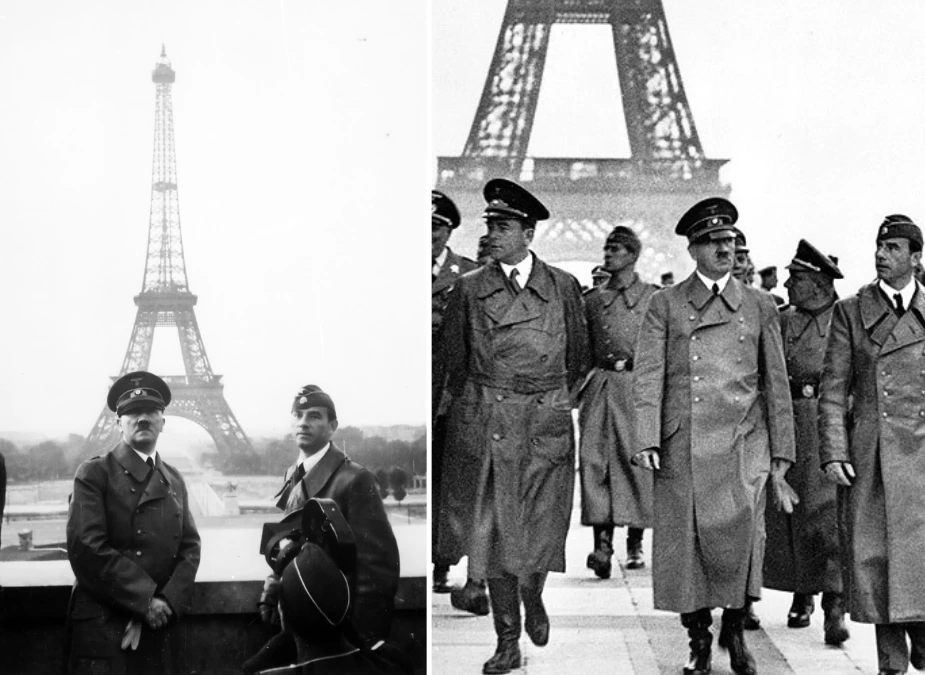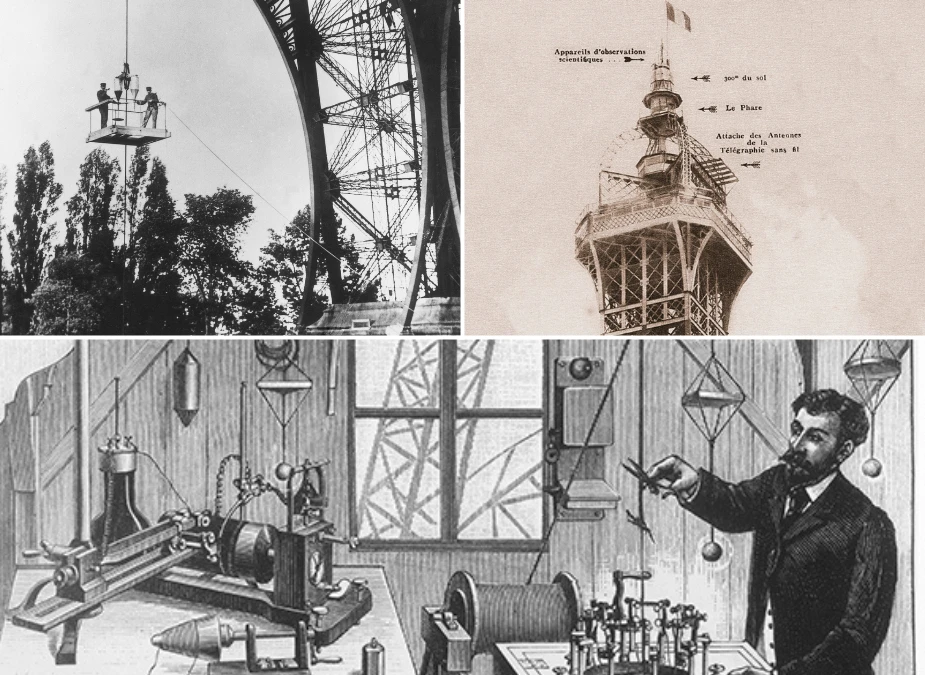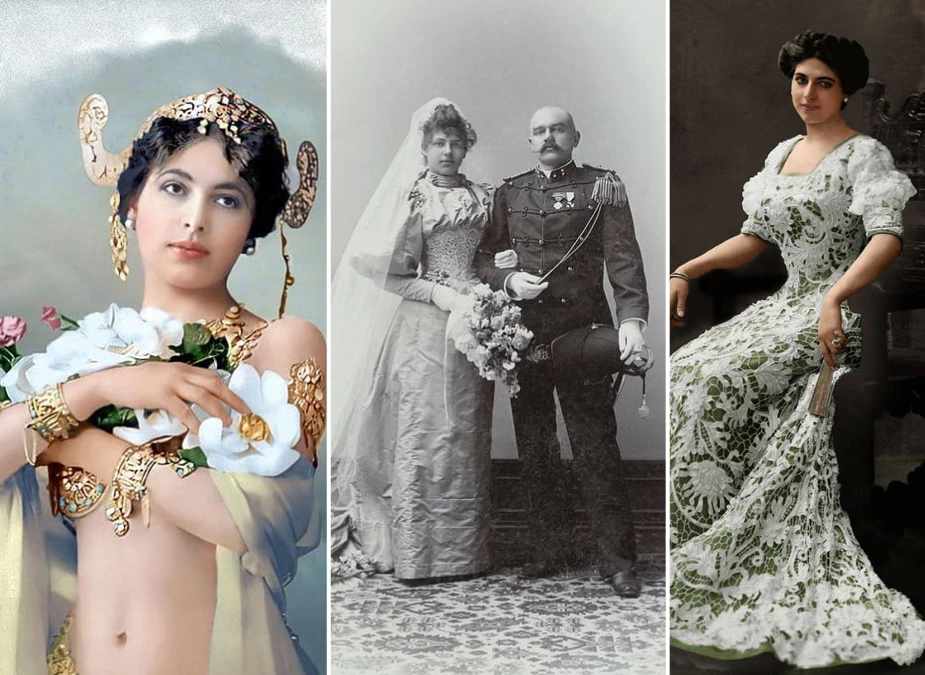The Eiffel Tower is one of the world’s most iconic structures, attracting millions of tourists annually.
Being an iconic symbol of Paris, it has a rich history and interesting stories that many people don’t know.
In this post, we will look at 11 interesting Eiffel Tower facts that will surely amaze you.
1. The Eiffel Tower has a hidden apartment at the top.
So, starting this list of 11 facts about the Eiffel Tower, the first fact that will blow your mind is that it has a Secret apartment on its Summit.
The top floor of the Eiffel Tower was always meant for guests, but Gustave Eiffel reserved the platform right below the peak for himself.
Although the Eiffel Tower has a huge balcony, the room inside is very small. It’s just about 1076 square feet (100 square meters), and the lift and machinery take up much of that area.
The apartment has a kitchen, a bathroom with a sink and a separate toilet cubicle, and a living area with a table, couch, piano and three tiny desks.
It was mainly used to entertain visitors and conduct experiments, the sounds of which could be heard throughout the tower.
2. The Eiffel Tower changes its height.

Moving next to this list of Eiffel Tower facts, we get to know that Eiffel Tower height changes. Isn’t that Shocking?
The Eiffel Tower adjusts to its surroundings and weather conditions, such as wind, cold, rain, snow, frost, and heat.
Like any metal, wet iron responds to temperature fluctuations by expanding in the summer and compressing in the winter.
When temperatures rise, the Tower expands due to thermal expansion, making it a few centimeters higher and leaning slightly away from the sun.
On the other hand, the metal structure contracts in cold temperatures, somewhat shrinking in size.
3. There are names of specific people engraved on the Eiffel Tower.
One of the cool facts about the Eiffel Tower is that the names of French scientists and engineers who helped build the Eiffel Tower have been engraved on the iconic monument.
There are 72 names, including notable people such as Foucault, Dumas, and Perrier, are engraved into the iron.
The engravings were initially hidden, but later, as part of a restoration project, they were made visible, allowing visitors to again view this tribute to the creative people responsible for the tower’s construction.
4. The heavy maintenance of The Eiffel Tower.
In this long list of Eiffel tower facts, now its time for us to know about the maintenance of the Eiffel Tower.
The iconic Eiffel Tower regularly receives heavy maintenance, including a fresh coat of paint every 7 years, to keep it shining bright and rust-free.
To cover the entire tower, 60 tonnes of paint are required.
The paint not only improves the visual appeal of the iron but also protects it from rusting due to exposure to weather conditions.
The painting process takes over a year to complete and requires a team of skilled painters applying the paint by hand, layer by layer.
Despite the vast amount of paint required, the color chosen for the tower is officially recognized as “Eiffel Tower Brown” and has become an iconic image of Paris.
Hurry Up!
Get Your Eiffel Tower Summit Access5. The Eiffel Tower was to be demolished after 20 years.
The Eiffel Tower was initially designed to be a temporary building.
It was constructed for the 1889 World’s Fair in Paris and was scheduled to be demolished after 20 years.
To prevent the tower from being demolished, Gustave Eiffel came up with a clever plan.
He suggested that the tower be utilized as a radio antenna and wireless telegraph transmitter, making it useful for scientific study and communication.
The French government finally agreed to Eiffel’s proposal, and the tower was saved from destruction.
The Eiffel Tower is still a radio and television transmission station today.
6. Hitler ordered the Eiffel Tower to be destroyed.

One of the historical facts about the Eiffel Tower is during Germany’s invasion of France during World War II, Hitler ordered the demolition of the Eiffel Tower.
But the order was never carried out due to the involvement of German General Dietrich von Choltitz, who refused to execute the order.
Choltitz is credited for rescuing the Eiffel Tower from destruction.
It is a common urban legend, even though there’s no proof for the claim that Nazis were forced to use the steps by French resistance fighters who severed the lift wires in the Tower.
7. Gustave Eiffel didn’t design the tower.
It’s true that Gustave Eiffel did not design the Eiffel Tower himself. Instead, he employed two of his company’s engineers, Maurice Koechlin and Emile Nouguier, to work on the tower’s design.
They also hired French architect Stephen Sauvestre to help design the tower. The team collaborated to produce a structurally solid and artistically appealing design.
Their design ultimately won out over 106 other projects in a competition to choose the centerpiece of the 1889 World’s Fair.
As a result, the tower was named after Eiffel in honor of his contributions to the project and his status as a notable businessman at the time.
8. Eiffel Tower is married.
It is one of the fun facts about the Eiffel Tower and It may surprise many, but the Eiffel Tower is married!
Erika LaBrie, commonly known as Erika Eiffel, a champion archer and object sexuality advocate, performed a marriage ceremony with the iconic building in 2007.
People worldwide admire and wonder at the Eiffel Tower, but Erika Eiffel took it to a new level.
Although it sounds strange to some, Erika’s tale shows the variety of ways individuals can encounter love and connection in their life.
9. Eiffel Tower is copyright protected.
The sparkling lights of the Eiffel Tower are a stunning scene, and many travelers have recorded the event on video.
It is one of the interesting facts about the Eiffel Tower, but did you know that these lights are copyright protected under French law?
The 20,000-bulb light show first brightened the night sky on New Year’s Eve 1999 to welcome the new century.
While the Tower is in the public eye, its illumination and glitter are considered copyrighted art.
The Eiffel Tower’s management, known as SETE, has the authority to decide whether professional or commercial photos of the Tower and its lights can be used. This is permitted under French law.
10. Eiffel Tower has been used as a laboratory.

The architect of the Tower, Gustave Eiffel, was a passionate scientist and engineer.
On the Tower’s third floor, he constructed a meteorology lab where he carried out several physics and aerodynamics experiments.
Eiffel even constructed a wind tunnel to model airflows around buildings.
In addition to carrying out his own study, Eiffel allowed other scientists to use his laboratory for their own investigations.
Although the laboratory is no longer in operation, the Tower’s reputation as a center for research is still alive.
11. The Eiffel Tower Helped Capture Mata Hari During World War 1.

Concluding this interesting list of Eiffel Tower facts, we know that the Eiffel Tower helped to capture Mata Hari during WWII.
In World War I, the Eiffel Tower’s wireless station was crucial in intercepting enemy messages from Berlin for the French military.
The intercepted information enabled the French to plan a counter-attack during the Battle of the Marne in 1914.
Later, in 1917, the station decoded a message sent in code from Germany to Spain called “Operation H-21.”
This message was used as evidence to arrest and convict Mata Hari, a legendary spy who was accused of working for Germany.
The French killed her, and the Eiffel Tower played an important role in her arrest.
Suggested article
Featured Image: Toureiffel.paris